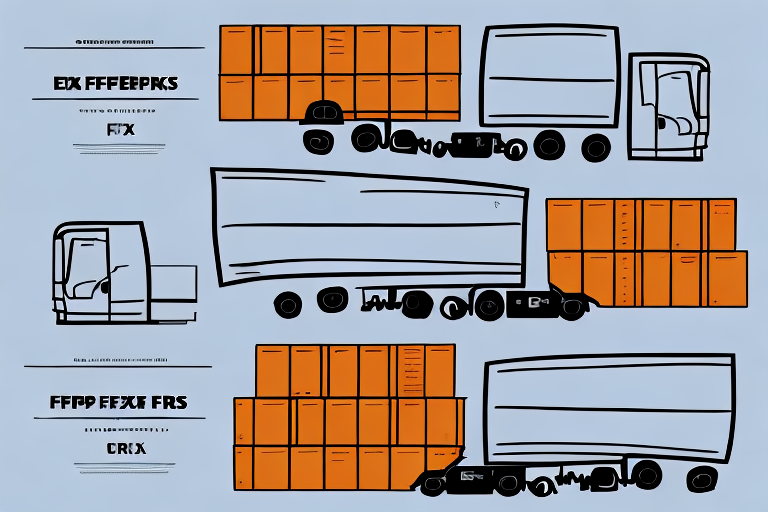Comparing Heavy UPS Shipping Rates vs. FedEx
Shipping heavy items can be challenging, both logistically and financially. Understanding the differences between leading carriers like UPS and FedEx is essential for businesses and individuals looking to optimize their shipping strategies. This comprehensive guide delves into the intricacies of both carriers' pricing structures, services, and best practices to help you make informed decisions.
Understanding Shipping Costs for Heavy Items
How Shipping Rates are Calculated
Shipping costs for heavy items are primarily determined by three factors: weight, dimensions, and destination. Carriers use these metrics to calculate the most efficient and cost-effective way to transport your package.
Weight and Dimensional Weight
While actual weight is a significant factor, carriers like UPS and FedEx also consider dimensional weight—a calculation based on the package's volume. This ensures that oversized but lightweight packages are priced appropriately.
Destination and Distance
The distance between the shipping origin and destination plays a crucial role in determining costs. Longer distances typically result in higher shipping fees due to increased fuel consumption and handling requirements.
Additional Services and Fees
Optional services such as insurance, signature confirmation, and expedited shipping can add to the overall cost. It's important to assess which services are necessary for your shipment to avoid unnecessary expenses.
UPS Shipping Rates: How They Are Calculated
UPS employs a zone-based pricing system for its Ground service, where rates vary based on the distance between the sender and the recipient. Additionally, UPS calculates dimensional weight using the formula: (Length × Width × Height) / 139.
For more detailed information, visit the UPS Shipping Rates page.
FedEx Shipping Rates: How They Are Calculated
Similar to UPS, FedEx uses a zone-based system for its Ground services. FedEx also calculates dimensional weight with the formula: (Length × Width × Height) / 139. It's essential to compare both carriers' rates, as FedEx may offer competitive pricing for specific weight and distance combinations.
For more detailed information, visit the FedEx Shipping Rates page.
Comparing UPS and FedEx Shipping Rates
Which Carrier is More Cost-Effective?
Determining which carrier offers cheaper rates depends on the specific details of your shipment. Factors such as package weight, dimensions, and destination can influence which carrier provides the best value.
Shipping Rates for Different Weight Ranges
- UPS: Often more economical for heavier packages due to their extensive logistics network.
- FedEx: May offer better rates for moderately heavy packages and faster delivery options.
Conducting a rate comparison using both carriers' online calculators can provide clarity for your specific needs.
The Impact of Distance on Shipping Costs
Domestic vs. International Shipping
Shipping domestically typically costs less than international shipping. However, rates can vary based on the specific regions involved. For international shipments, factors like customs fees and international handling charges come into play.
Mode of Transportation
Choosing between ground and air transportation affects both cost and transit time. Ground shipping is generally more cost-effective for shorter distances, while air shipping is faster but pricier for long-distance or international deliveries.
Carrier-Specific Distance Discounts
Both UPS and FedEx offer discounts for shipping over certain distances or to specific regions. It's advisable to consult with the carriers to determine eligibility for these discounts.
Importance of Packaging for Heavy Shipments
Proper Packaging Techniques
Using sturdy materials and the right box size is essential to protect heavy items during transit. Reinforced packaging can prevent damage and minimize the risk of additional fees for oversized packages.
Sustainable Packaging Practices
Adopting eco-friendly packaging materials not only protects your items but also contributes to environmental sustainability. Some carriers offer incentives for using recyclable or biodegradable packaging.
Insurance and Liability Coverage
Understanding Coverage Options
Both UPS and FedEx provide insurance and liability coverage for shipped packages. This coverage is crucial for high-value or fragile items, ensuring financial protection against potential damage or loss.
Limitations and Exclusions
It's important to review the terms and conditions of insurance policies, as there may be limitations or exclusions based on package type, value, or destination. Keeping detailed documentation can facilitate claims if issues arise.
Transit Times and Delivery Factors
Estimated Delivery Times
Transit times vary based on the chosen service level—standard ground shipping versus expedited air shipping. Understanding the urgency of your shipment can help you select the most appropriate service.
Factors Affecting Delivery Speed
Variables such as weather conditions, holidays, and carrier operational efficiency can impact delivery times. Planning ahead and allowing buffer time can mitigate potential delays.
Customer Service Comparison: UPS vs. FedEx
Both UPS and FedEx offer robust customer service options, including online support, phone assistance, and in-person help at service centers. Customer reviews indicate that while both carriers strive for excellence, response times and issue resolution effectiveness may vary.
For more insights, visit the Customer Service Comparison page.
Special Services Comparison: UPS vs. FedEx
Special services like liftgate assistance, white glove delivery, and Saturday delivery are available from both carriers. Comparing these options can help you choose the best service level for your heavy shipping needs.
- UPS: Offers services such as UPS Access Point for flexible drop-off and pick-up options.
- FedEx: Provides FedEx Delivery Manager for enhanced delivery preferences.
Choosing the Best Carrier for Your Business Needs
Selecting the right carrier involves evaluating multiple factors, including cost, delivery speed, reliability, and customer support. Businesses should assess their shipping volume, package specifications, and customer expectations to make an informed choice.
Strategies to Reduce Shipping Costs
Negotiating Better Rates
Establishing a strong relationship with your chosen carrier can open opportunities for discounted rates, especially for businesses with high shipping volumes.
Cost-Saving Tips and Tricks
- Utilize flat-rate shipping options where applicable.
- Opt for ground shipping to reduce expenses.
- Take advantage of carrier promotions and discounted rates for bulk shipments.
Implementing these strategies can lead to significant savings on your heavy shipping costs.




















